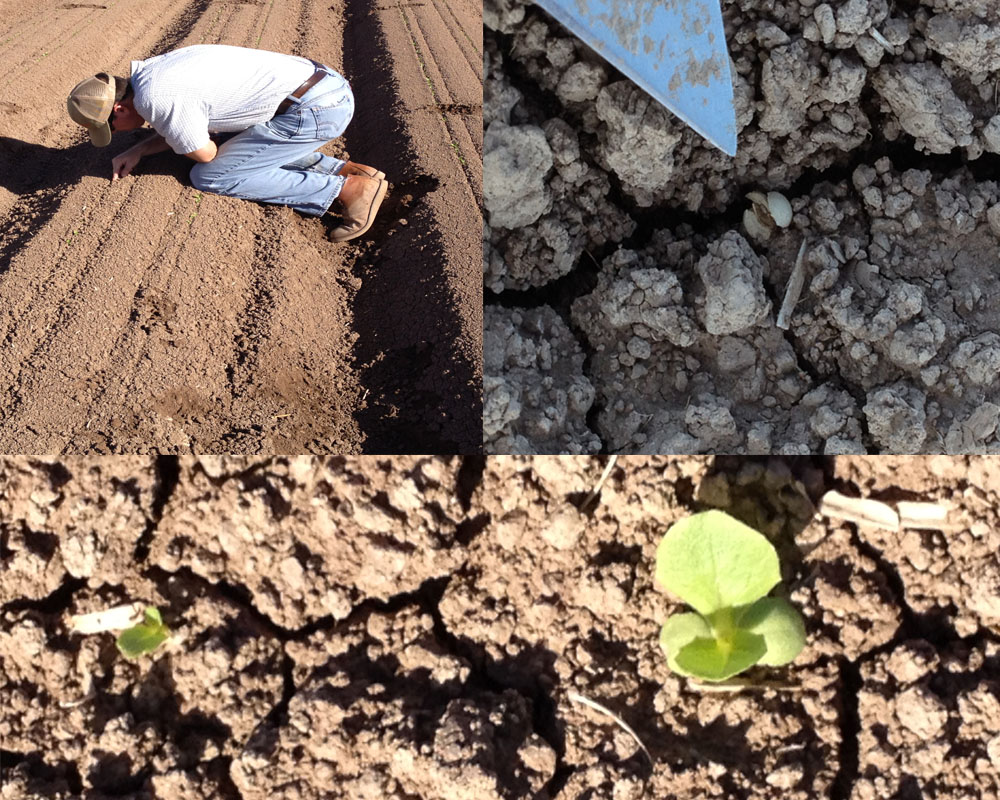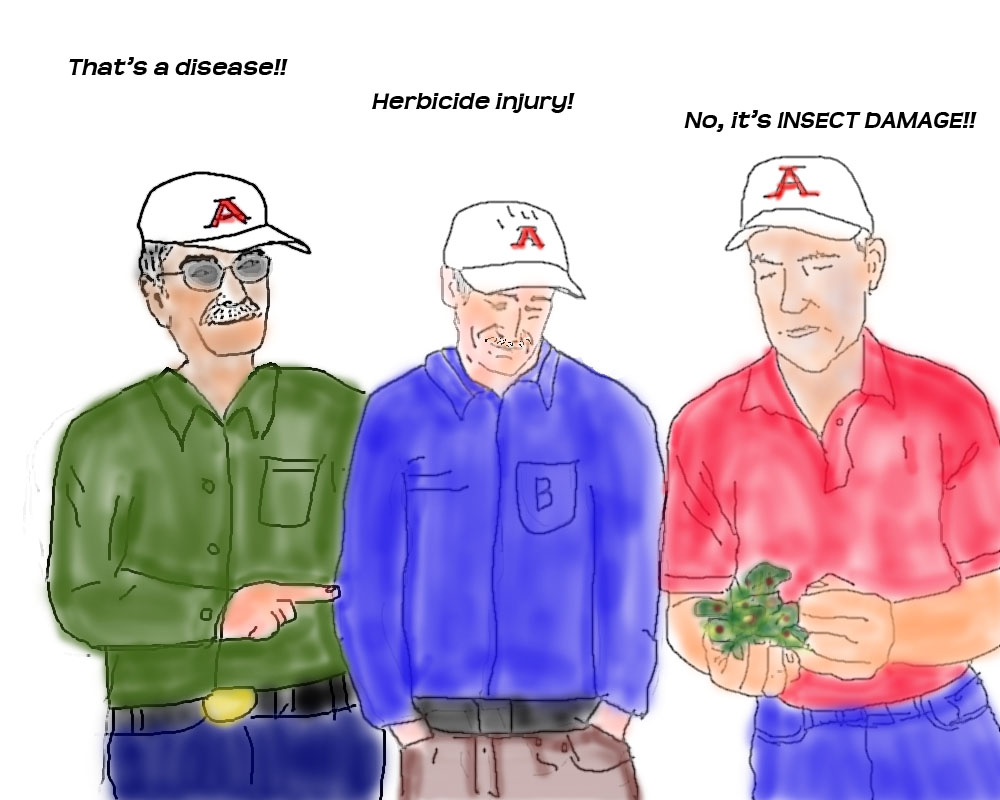
|
|
|
|

|
|||
|
|
|||
|
|
|||
|
All three of the preemergence herbicides used in lettuce, Pronamide (Kerb), Benefin (Balan) and Bensulide (Prefar) use the same mode of action to kill weeds. They are mitotic inhibitors and stop cell division and growth of the roots. When lettuce is exposed to too much of these herbicides root development is also inhibited. The symptoms of crop injury is stunting, marginal chlorosis and death if the plant cannot recover. This is what you would expect from a plant that does not have roots to take up water and nutrients. Anything that inhibits normal root development can produce these same symptoms. Some of the other conditions that also cause poor root development, stunting and chlorosis are excessive salts, excessive fertilizer, soil compaction and crusting and other conditions. Salts inhibit the movement of water and nutrients into the roots. Sometimes water and nutrients are pulled out of the roots. Crop injury symptoms from salts resemble those caused by the herbicides, i.e. stunting, chlorosis and poor root development. Fertilizer contains salts and when in excess, cause similar problems. All of these conditions are additive and it’s often difficult to identify the principal cause of crop injury.
Click picture to listen to Barry
To contact Barry Tickes go btickes@ag.arizona.edu. |
|||
| Back | |||
|
For questions or comments on any of the topics please contact Marco Pena at the Yuma Agricultural Center.
|
|||
|
Home |
Cotton | Veggies |
Forages | Grains
| Citrus |
Crop x Crop Insects | Diseases| Weeds | Pesticides | Economics | News | Weather | Research | Photos | Contacts | General Info. Copyright © 2001 University of Arizona, College of Agriculture and Life Sciences Webmaster: Al Fournier (acis@ag.arizona.edu) |
|||


